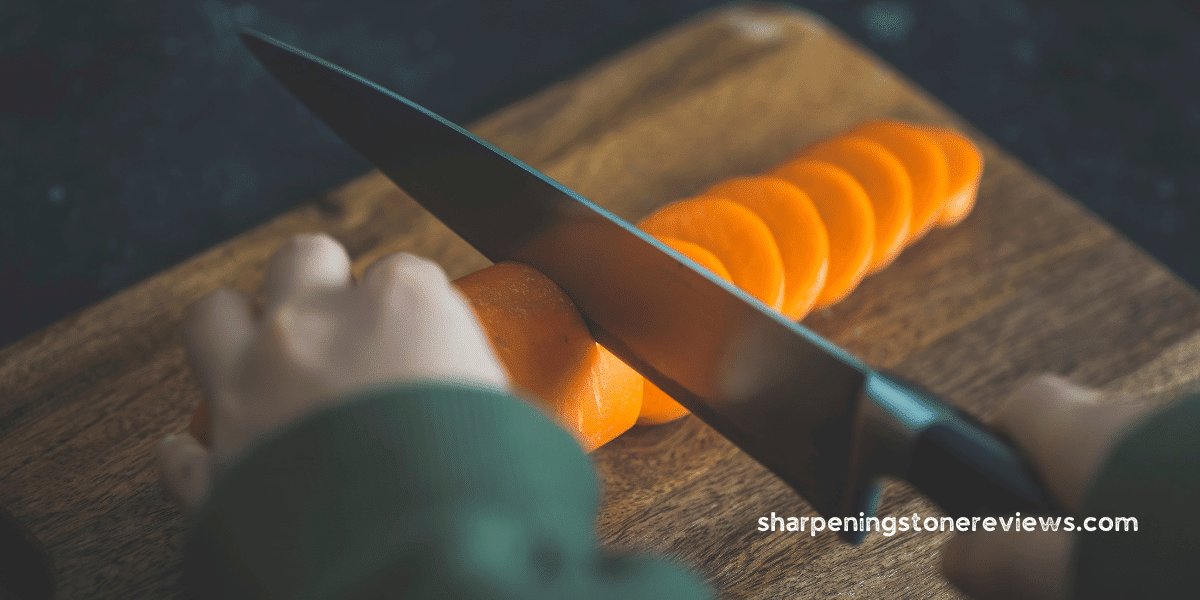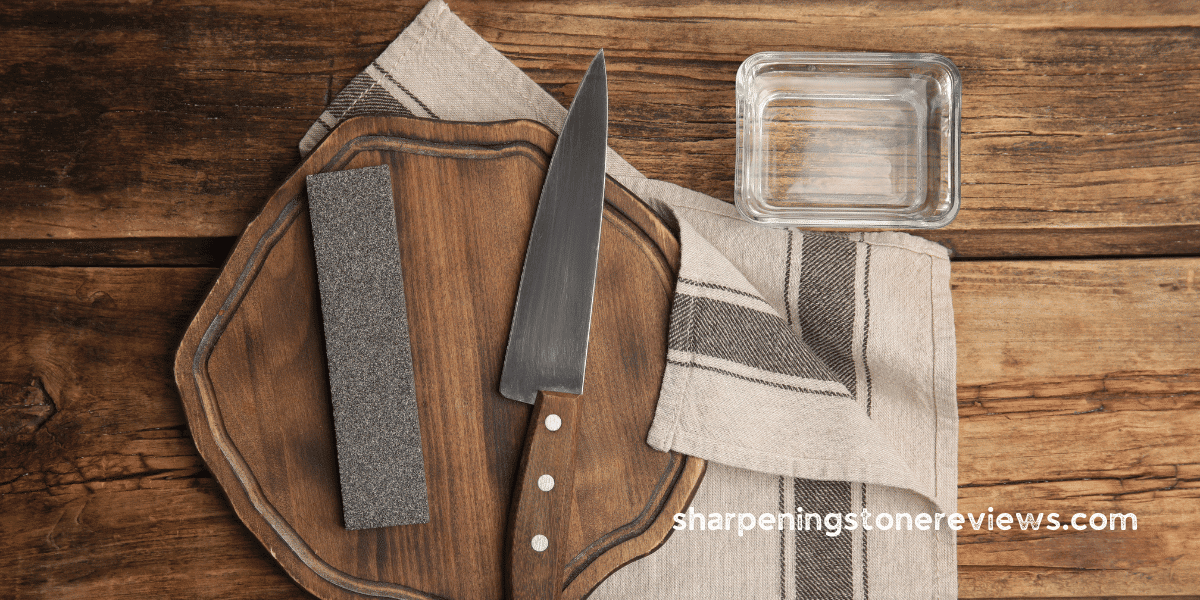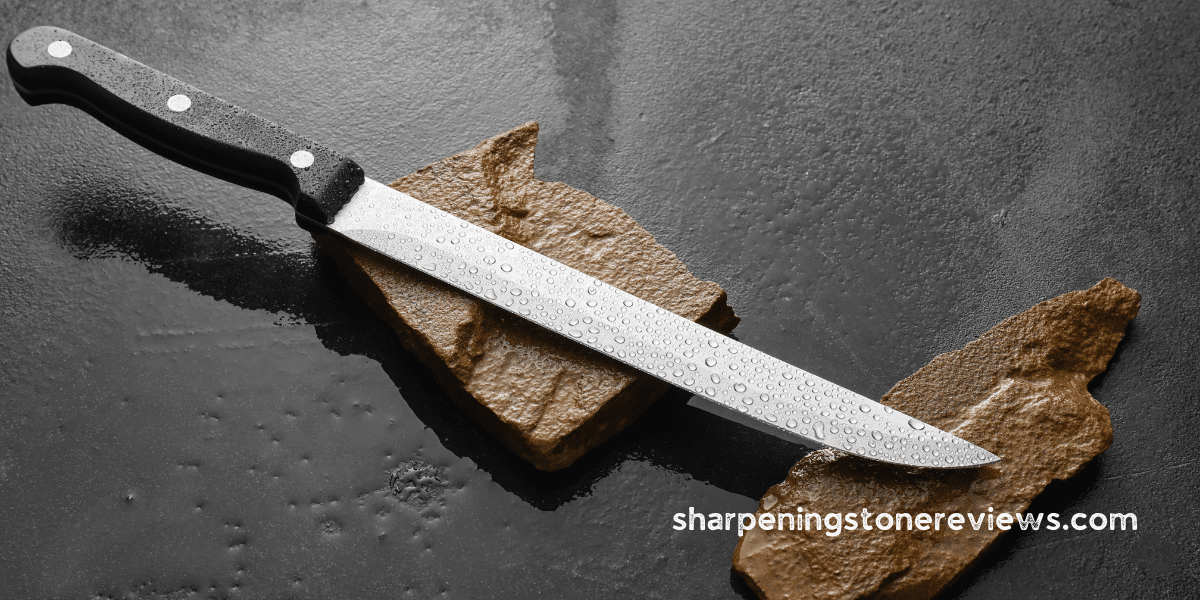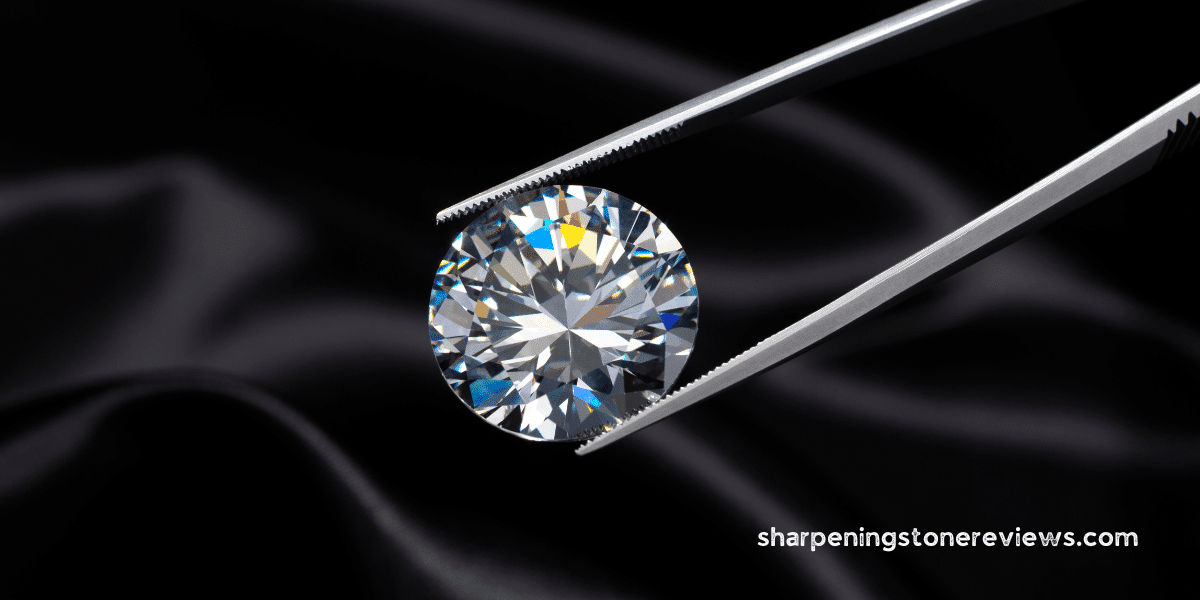Imagine holding a knife in your hand, its blade gleaming with potential. Do you know the names of the different parts that make up this essential tool?
In this article, we will delve into the intricate world of knife anatomy. From the versatile blade to the sturdy handle, each component plays vital role in shaping your culinary experience.
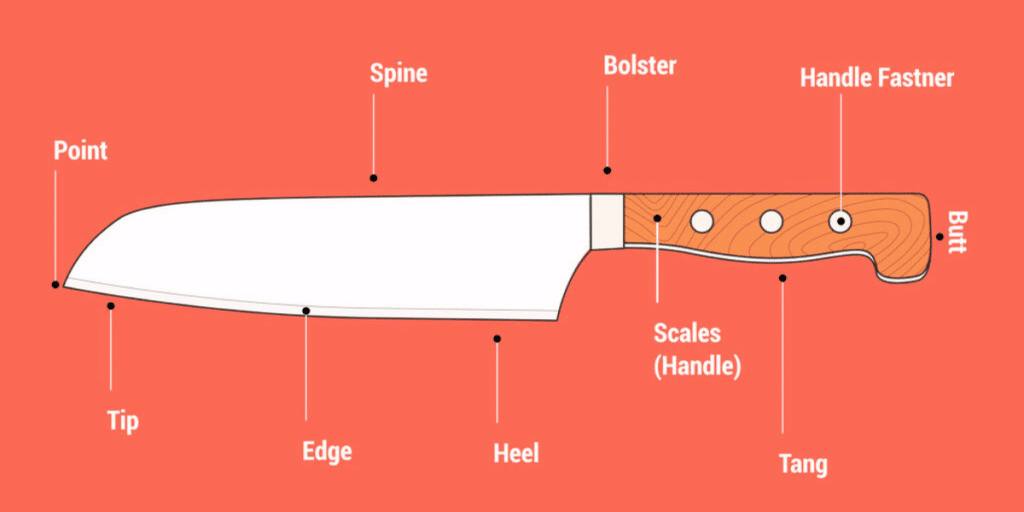
So join us as we explore the symbolism behind each part and uncover their precise functions. Let’s dive deep into the fascinating realm of ‘Parts of a Knife Names.’
Blade
The blade is the main component of your knife, and it comes in various shapes and forms. It is the part responsible for cutting, slicing, and dicing. There are different types of blades available, each with its own unique characteristics.
One important feature of a knife blade is the cutting edge. This is the sharp part of the blade that actually does the work. The cutting edge can be made from different materials like stainless steel or carbon steel. Stainless steel blades resistant to corrosion and require less maintenance, while carbon steel blades offer a sharper edge but may require more care.
Another aspect to consider is the blade style. Straight-edged blades are the most common and versatile type. They are ideal for everyday tasks like chopping vegetables or mincing herbs. Serrated blades have small teeth along their edges and are perfect for cutting through tough materials like steak or bread. Scalloped blades have rounded indentations along their edges, making them excellent for slicing softer surfaces like tomatoes without crushing them.
When choosing a knife, it’s essential to consider what you’ll be using it for and select a blade style that suits your needs. Whether you’re amateur cook or a professional chef, having the right type of knife blade can make significant difference in your culinary experience.
Handle
An ergonomic handle provides maximum comfort and grip while using a knife. The handle, also known as the scales, is where you hold the knife during use. It plays crucial role in ensuring that you have full control over the blade and can maneuver it with ease. Handles are made from various materials such as wood, plastic, or synthetic materials like G-10 or Micarta, which offer excellent durability and resistance to moisture.
To enhance grip, some handles feature texture or patterns that prevent slipping even when your hands are wet. Additionally, many handles have a thumb rest or thumb rise near the blade’s base, allowing for better control and precision during cutting tasks.
The handle material should be chosen carefully based on personal preferences and requirements. Some prefer wooden handles for their natural warmth and aesthetic appeal. On the other hand, synthetic materials often provide better grip and are resistant to wear and tear.
Another important feature of the handle is the tang. The tang refers to extension of the blade that goes through the handle. A full tang knife has its tang extending all the way to the end of the handle, providing greater strength and stability.
Moreover, sloped bolsters on either side of the handle can serve as finger guards while also adding balance to the knife. These sloped bolsters ensure safety by preventing your fingers from sliding onto blade during use.
Tang
When choosing a knife, make sure to consider the tang, which is the extension of the blade that goes through the handle for added strength and stability. The tang plays a crucial role in determining the overall quality and durability of knife. There are different types of tangs to choose from, including partial tang and full tang knives.
A partial tang refers to a blade where only part of it extends into the handle. While this design may work well for lighter tasks, it lacks the same level of strength as a full tang knife. Full tang knives have blades that extend all the way through the handle, providing maximum stability and ensuring that even heavy-duty tasks can be performed with ease.
Tapered tangs are another type commonly found in high-quality knives. These taper down towards the end, reducing weight without compromising on strength. This design enhances balance and maneuverability during use.
In addition to considering the type of tang, it’s also important to look at other features such as semi bolsters, hollow grinds, single bevel knives, treating, and cryogenic processing of knife blade steels. Semi bolsters provide extra finger protection while allowing for easy sharpening along the entire length of the blade.
Hollow grinds refer to concave bevels on both sides of the blade, which create an extremely sharp cutting edge. Single bevel knives have only one side ground at an angle while leaving one side flat or slightly convex.
Lastly, understanding how knife blade steels are treated and processed is essential in selecting a durable and long-lasting tool. Treatments such as heat treatment and cryogenic processing enhance hardness, toughness, and corrosion resistance properties in steel blades.
Bolster
Consider the thickness and weight of the bolster when choosing a knife handle that provides control and endurance. The bolster is an intermediate component between the blade and handle, playing a crucial role in knife performance. A dense and heavy bolster ensures stability and improves cutting precision.
The bolster’s primary function is to provide control during cutting tasks. It adds weight to the front end of the knife, giving you better balance and maneuverability. When you hold a knife with a well-designed bolster, your thumb can rest comfortably on top, allowing for greater control over the blade edge.
Additionally, a strong bolster enhances endurance by reducing hand fatigue during prolonged use. Its presence helps to distribute force evenly along the length of the handle while cutting through tough materials. This reduces strain on your wrist and allows for more efficient cutting.
The quality of the steel used in both the blade edge and bolster is also important. High-quality steel ensures durability and maintains sharpness for longer periods of time. Look for knives with bolsters made from sturdy materials which will not chip or break easily.
When selecting a knife with a bolster, consider how it feels in your hand. Check if it fits comfortably in your grip and if there are any pressure points that may cause discomfort during use.
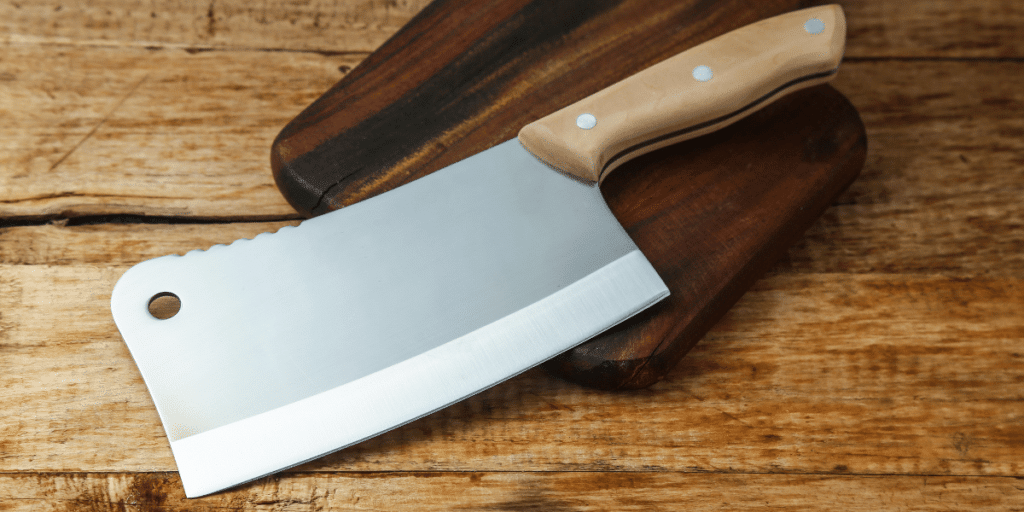
Edge
The edge of a knife is crucial for effective cutting, as a dull edge won’t cut properly. Here are three important things you need to know about the edge of a knife:
- Types of Edges:
- V-shaped Edge: This is the most common type of edge found on knives. It consists of two angled sides that meet at the center to form a sharp cutting edge. The V-shaped edge provides excellent slicing and chopping capabilities.
- Chisel Edge: Unlike the V-shaped edge, the chisel edge only has one side that tapers down to a sharp point. This type of edge is incredibly sharp but lacks precision when compared to the V-shaped edge.
- Other Variations: There are several other variations of knife edges, such as compound bevels, hollow edges, and convex edges. Each variation has its own unique characteristics and benefits.
- Importance of Sharpness: Keeping your knife’s edge sharp is essential for efficient cutting. A sharp blade will effortlessly glide through food, reducing risk of accidents and ensuring precise cuts. Regular sharpening using proper techniques will help maintain your knife’s performance.
- Materials Used for Edges: Knife edges are made from different types of steel depending on their intended use. High-carbon stainless steel blades offer excellent durability and corrosion resistance while maintaining their sharpness for longer periods. Other materials like ceramic or carbon steel can also be used for specific purposes.
Understanding these aspects of the knife’s edge will enhance your knowledge about its parts and names while allowing you to make informed decisions when purchasing or maintaining your knives. Remember, a well-maintained and properly sharpened knife edge is essential for achieving optimal performance in all your cutting tasks!
Point
If you’re looking for a versatile knife, the point is rarely used in the kitchen but can be handy for fine-cutting and delicate cuts. The point refers to the furthest part of the blade from the handle, sharp and used for piercing. It is often confused with the tip or belly of the knife, which is a small area below the point where the blade curves. The different types of tips include drop-tip, bowie-style, and hawksbill tips.
In terms of cutting, while the main focus is on the edge of a knife, it’s important not to overlook the potential uses of the point. When working with delicate ingredients or making precision cuts, such as removing seeds from fruits or deveining shrimp, having a sharp and precise point can make all the difference.
To give you a better understanding of various knife parts and their functions, here’s a table:
| Part | Description |
|---|---|
| Blade | The main component is made from steel; it comes in different shapes and forms. |
| Edge | Used for cutting; V-shaped edge is most common |
| Handle | Holds scale materials like wood or synthetic materials |
| Materials | Different options available for handles including wood, plastic, rubber |
While knives primarily rely on their edges for cutting tasks, having a well-crafted point can add versatility to any kitchen arsenal. Whether it’s creating intricate designs on vegetables or precisely trimming fat from meat, don’t underestimate what this often overlooked part can bring to your culinary endeavors.
Spine
Now let’s move on to the spine of a knife. The spine is the top of the blade, opposite to the cutting edge. While it may not have direct use in the kitchen, its thickness can indicate the overall quality of the knife. Thicker spines are often found on heavy-duty knives that require more durability and strength, while thinner spines offer flexibility for delicate tasks.
In modern knife manufacturing, the spine is an integral part of creating a high-quality blade. It is carefully shaped and forged from a single piece of steel to ensure optimal performance and longevity. Knife spines are often subjected to various treatments, such as heat treatment and cryogenic processing of blade steels, which enhance their hardness and toughness.
The spine also plays a role in balancing out the weight distribution of the knife. A well-balanced knife ensures comfortable handling and precision during use, making it an essential feature for professional chefs who rely on their knives for long hours in busy kitchens.
Although not directly involved in cutting or slicing food, paying attention to the spine is still important when choosing a knife. A well-constructed spine contributes to overall performance and durability by providing stability and support to the blade.
So next time you’re shopping for a new knife, take some time to examine its spine along with other features like style blades and handle materials. By understanding these details, you’ll be able to find a knife with a sharp cutting edge that meets your needs as both an avid home cook and a professional chef.
Butt
The butt of a knife, also known as the pommel, should not be used for heavy blows. The butt is located at the end of the handle and serves as a counterbalance to the blade. It is designed to provide stability and control during cutting tasks. However, using the butt for heavy blows can cause damage to both the knife and your hand.
In a kitchen knife or chef knife, the butt is not meant for pounding or striking hard surfaces. Instead, it is best suited for light tapping or gentle nudging when necessary. When using a cutting board or any other cutting surface, it’s important to use proper technique and avoid applying excessive force with the butt of the knife.
For handmade knives, especially those made from high-quality materials like Damascus steel, using the pommel for heavy blows can potentially result in cracks or even breakage of the blade. These knives are often crafted with precision and care, making them more delicate than mass-produced ones.
If you find yourself needing to apply force while cutting through a tough piece of material, consider using a different tool specifically designed for that purpose instead of relying on the butt of your kitchen knife or chef knife.
Remember that knives are tools meant to be used safely and effectively. Using proper technique and avoiding unnecessary stress on certain parts like the butt will help maintain their longevity and performance over time. So next time you’re in need of some extra power in your cutting tasks, resist using the pommel and explore alternative options available to you in order to protect both your knife and yourself.
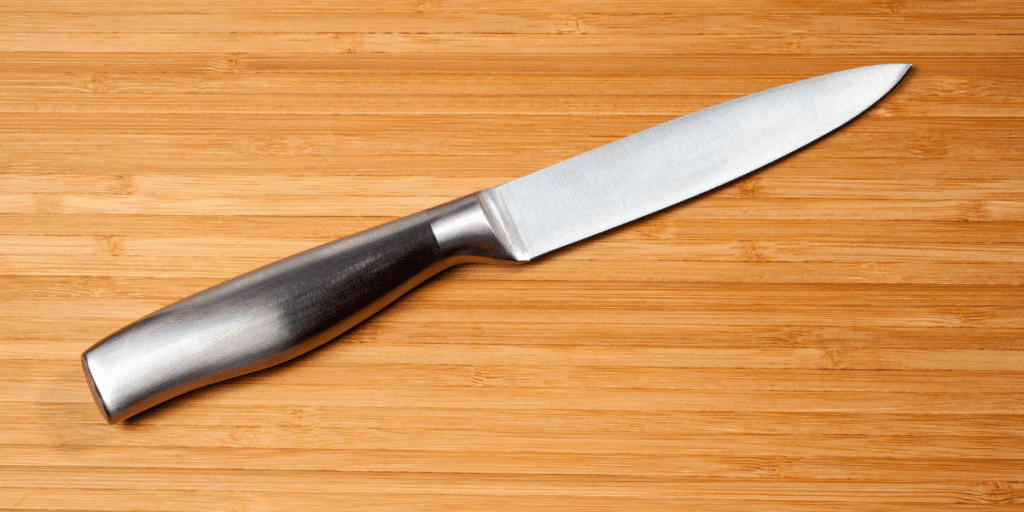
Heel
When using your kitchen knife, the heel provides you with more control over objects and helps you cut through tough materials. The heel is the widest point of the blade before the handle. It serves as a leverage point, giving you the power to slice through dense ingredients like meat or tough vegetables.
The heel is particularly useful when using certain types of knives. For example, a bread knife often has a long serrated edge and a wide heel that allows for easy cutting through crusty loaves without crushing them. Santoku knives, known for their versatility in slicing, dicing, and mincing, also have a pronounced heel that aids in precision cuts.
Utility knives and boning knives may have narrower heels compared to other blade knives but are still designed to provide control and strength for specific tasks. The full tang construction, where the blade extends all the way through the handle, ensures stability and durability by incorporating the heel into its design.
To fully utilize the benefits of the heel, it’s important to hold your knife correctly. Grip the handle firmly with dominant hand while placing your index finger along the spine of the blade for added control. This grip will allow you to apply precise pressure on the heel when needed.
Rivets
To ensure durability and stability, you should make sure that the rivets on your knife handle are properly fastened. Rivets are metal pins that keep the handle fixed together, ensuring that it stays intact even with heavy use. Most knives have three rivets strategically placed along the handle to provide maximum strength and support.
Here is a table highlighting some important information about rivets:
| Keyword | Description |
|---|---|
| Japanese knives | Known for their high quality and precision, often featuring riveted handles |
| Type of knife | Various types of knives can have riveted handles |
| Quality Knife | A well-made knife will have secure and durable rivets |
| Piece of metal | Rivets are typically made from a strong and sturdy material |
| Entire handle | The entire handle is held together by the metal pins |
Rivets play a crucial role in maintaining the structural integrity of a knife’s handle. They ensure that all components are securely attached to each other, providing stability during use. Without properly fastened rivets, a knife’s handle may become loose or even detach completely from the blade.
It’s important to note that not all knives require rivets. Some pocket knives or certain types of Japanese knives may have different mechanisms for fastening the handles without using metal pins. However, for heavy-duty knives or those used in professional settings, riveted handles are preferred due to their reliability and long-lasting performance.
Now that you’re familiar with the various parts of a knife, you’ve unlocked the key to becoming a true culinary master.
Just like a conductor leading an orchestra, each part plays a vital role in creating culinary symphonies.
Imagine yourself effortlessly slicing through a juicy steak, the serrated blade dancing through the meat like a ballerina on stage.
Feel the power of the V-shaped edge as it effortlessly glides through vegetables, like a hot knife through butter.
With this knowledge, you hold the key to unlocking your inner chef and creating culinary masterpieces with precision and finesse.
So go forth, armed with your newfound knowledge, and let your knives be your trusted companions in your culinary journey!

Frequently Asked Questions
What Are Some Common Materials Used for Knife Handles?
Common materials used for knife handles include wood, plastic, and metal. Wood provides a classic look and good grip. Plastic is lightweight and durable. Metal handles are strong but can be slippery.
How Do Different Types of Tips (Drop-Tip, Bowie-Style, Hawksbill) Affect the Knife’s Functionality?
Different types of knife tips, such as the drop-tip, bowie-style, and hawksbill, affect functionality differently. The drop-tip provides precision and control, the bowie style is versatile for various tasks, and the hawksbill excels in intricate cutting.
What Is the Purpose of a Chisel Edge on a Knife?
The purpose of a chisel edge on a knife is to provide a very sharp cutting edge that may not be as precise as other edges. It is commonly used for tasks that require strength and power rather than precision.
Can You Explain the Concept of Compound Bevels and How They Affect the Knife’s Cutting Ability?
Compound bevels are an interesting concept in knife blades. They involve combining multiple angles on the edge, resulting in increased cutting ability. Compound bevels can enhance slicing performance and improve durability.
Are There Any Specific Maintenance Tips for Keeping Rivets in Good Condition?
To maintain rivets in good condition, regularly inspect them for any signs of looseness or damage. If necessary, tighten or replace them using appropriate tools. Keep the knife handle clean and dry to prevent corrosion and ensure long-lasting stability.
